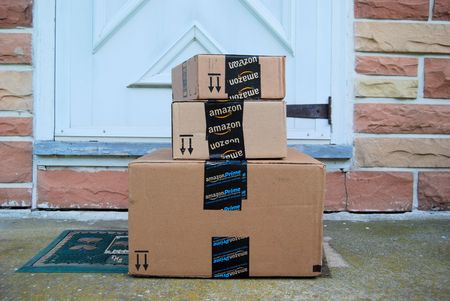在搞死无数实体店后,亚马逊自己开起了实体店

|
上周,亚马逊(Amazon)在纽约市开设了第七家实体店,此举看起来相当违反直觉。为什么这家将许多实体书店推向死亡的公司会去自己开设实体店?然而,战略角度上看,实体店不仅不是公司在图书零售的后退,反而让他们在构建独特的跨领域、多渠道品牌上前进了一大步。实体店可能会给亚马逊带来以下几条好处: 内容探索 亚马逊的网上书店可以让消费者轻松找到他们需要的书。但是巨大的清单也有代价:对于那些不确定自己想要什么的消费者而言,选择实在太多了。亚马逊网站是引领“一键”网上购物的先锋,它对于那些想要购物时节约时间的消费者而言是个很棒的选择,而实体店则更适合想要消磨时间找找新书的人。为此,亚马逊列出了消费者评分最高的作品排名,甚至还有Kindle数据给出的阅读速度排名。 内容推销 除了推销其他出版商的作品之外,实体店也让亚马逊有机会推销自己的内容。没错,亚马逊不只是经销商,本身也是多产的内容提供商。亚马逊工作室推出了一系列大作,其中还包括广受好评、荣膺今年奥斯卡奖的原创电影《海边的曼彻斯特》(Manchester by the Sea)。亚马逊有着庞大的消费者基础,而且不仅对他们的喜好了如指掌,还能轻易联系到他们。公司正摩拳擦掌,志在以经销商和内容开发商的身份成为娱乐界的巨头之一。这样的情况下,实体零售店可以作为亚马逊自身数字内容的推销地点,无论那是图书、音乐、视频还是电影。 设备展示 亚马逊的实体店正在成为展示厅,人们可以体验到公司最新的产品,包括Kindle电子阅读器、Fire平板电脑和Echo个人助手。即使亚马逊想要在实体店提高图书销量,凭借这些店面所在的地段,只需要展示出产品和服务,让消费者体验到网购不可能获得的产品触觉体验,都能为亚马逊创造价值。百思买(Best Buy)就采用了这种战略,他们最近与微软(Microsofe)、三星(Samsung)和索尼(Sony)等公司合作来推销产品。亚马逊不需要与其他公司合作,可以直接推销自己的电子产品,这让开实体店变得很划算。 推动Prime服务 亚马逊还将实体店作为推销每年99美元的Prime会员的新途径之一。这里的吸引力在于,零售店的消费者成为Prime会员,就能避免支付店内的标价,那可比亚马逊网店的价格高得多。把消费者变成Prime会员,是亚马逊商业模式中重要的一部分,因为这不仅可以提高顾客忠诚度——就像好市多(Costco)等其他拥有会员制的零售商一样——还可以很大程度地带来盈利。亚马逊还在实体店和网店推销着自己的信用卡,这有助于进一步提高顾客忠诚度。 品牌建设 除了功能上的利好,实体店还可能让亚马逊的品牌具象化,增加它在消费者中的存在感,从而丰富亚马逊的品牌形象。这一方面,亚马逊的零售战略模仿了耐克(Nike)、迪斯尼(Disney)、苹果(Apple)和微软,他们都用实体店展示自己的品牌,借此增强顾客的忠诚度。亚马逊在纽约哥伦布圆环广场(Columbus Circle)的新店,是在销售图书之外一次品牌建设的绝妙之举。 在其他书店举步维艰之际,亚马逊的实体店能否取得成功?只有时间能告诉我们答案。但是亚马逊是一家以消费者为中心的技术公司,他们知道如何使用数据来确定、跟踪和预测消费者的偏好。通过在书店内建立自己的展示区,亚马逊凸显了他们通过多种渠道推销产品的能力,同时还能利用可扩展性和高效益物流带来的优势。这些优势没有办法单靠卖书就得到充分利用,而是要通过广泛的产品组合和服务来发扬光大。因此,亚马逊实体书店的成功,是利用其生态系统下各种产品的协同效应而实现的。公司若要让实体书店的销售模式成功回归,这些协同效应,配合忠实的消费者群体与合理的管理手段,将会起到巨大的助力。(财富中文网) 作者亚历山大•切内夫是美国西北大学凯洛格商学院的教授。 译者:严匡正 |
Amazon’s seventh physical store opening—the latest in New York City last week—might seem rather counterintuitive. Why would a company that is responsible for the demise of many bricks-and-mortar retail stores bother to open its own physical stores? Yet, from a strategic standpoint, brick-and-mortar stores are not a slip backward into book retailing, but rather a step forward toward establishing a unique, cross-category, omni-channel approach. There are several ways in which physical stores might benefit Amazon: Content discovery Amazon’s online bookstore is a place where customers can easily find the book they are looking for. But its huge inventory comes at a cost: There is simply too much choice available for consumers who are unsure about what they want to read. Amazon.com—the pioneer of “one-click” online purchasing—is a great option for customers who like to save time when shopping, but its brick-and-mortar stores work better for customers who want to spend time discovering new reads. To this end, Amazon makes it easy by curating lists of books by consumer ratings, and even the speed of reading the content, as measured by Kindle data. Content promotion In addition to promoting other publisher titles, physical stores provide Amazon (amzn, -0.21%) with an opportunity to promote its own content. Indeed, Amazon is not only a distributor, but also a prolific content creator. Among the major hits from Amazon’s studios is the critically acclaimed original movie, Manchester by the Sea, which won an Oscar this year. Given that Amazon has a large customer base whose preferences it knows intimately and whom it can easily reach, Amazon is poised to become a major force in the entertainment industry, both as a distributor and as a content developer. In this context, physical retail locations can serve as a viable venue for promoting Amazon’s own digital content, be it books, music, videos, or movies. Device showcase Amazon’s physical stores are becoming showrooms where people can experience its latest gadgets, including Kindle e-readers, Fire tablets, and the Echo personal assistant. Even if Amazon were to break even on book sales in its physical stores, these brick-and-mortar locations could create value for Amazon merely by showcasing its products and services and giving consumers a tactile experience of products in a way that isn’t possible online. Best Buy has embraced this strategy, recently partnering with companies such as Microsoft, Samsung, and Sony (sne, +0.38%) to promote their products. In Amazon’s case, this approach does not need an external partner—it could make its brick-and-mortar stores worthwhile by promoting its own electronics. Boost for Amazon Prime With physical stores, Amazon is also finding new ways to promote its $99-a-year Prime membership. The hook is that retail store shoppers must be Prime members to avoid paying the list price, which could be much higher than Amazon’s online price. Transitioning Amazon customers into Prime members is an important aspect of Amazon’s business model because it not only increases customer loyalty but—as in the case with the other membership-based retailers such as Costco—makes a significant contribution to its bottom line. Amazon is also promoting its branded credit card in its stores and online, which can help garner even greater consumer loyalty. Brand-building In addition to their functional benefits, physical stores have the potential to enrich Amazon’s brand image by adding a tangible dimension to the brand and increasing its prominence in consumer minds. In this context, Amazon’s retail strategy mirrors that of companies like Nike(nke, +0.13%), Disney(dis, -0.37%), Apple(aapl, -0.51%), and Microsoft (msft, -0.81%) that have used their physical locations to increase customer loyalty by showcasing their brands. Amazon’s new store at Columbus Circle in New York embodies an astute brand-building move that goes well beyond selling books. Will Amazon’s brick-and-mortar bookstores succeed where other booksellers are struggling? Only time will tell. But Amazon is a customer-centric technology company that knows how to use data to identify, track, and anticipate consumer preferences. By creating its own showrooms in its bookstores, Amazon has heightened its ability to promote its offerings across multiple categories while still capturing the benefits of scalability and cost-efficient logistics. These benefits cannot be optimized by bookselling alone, but they can be captured across a broad portfolio of products and services. Thus, the success of Amazon's physical bookstores hinges on utilizing the synergies across the different offerings in its ecosystem. These synergies, coupled with a loyal customer base and sound management, should go a long way to help Amazon succeed in bringing back the brick-and-mortar bookseller business model. Alexander Chernev is a professor at Kellogg School of Management at Northwestern University. |













